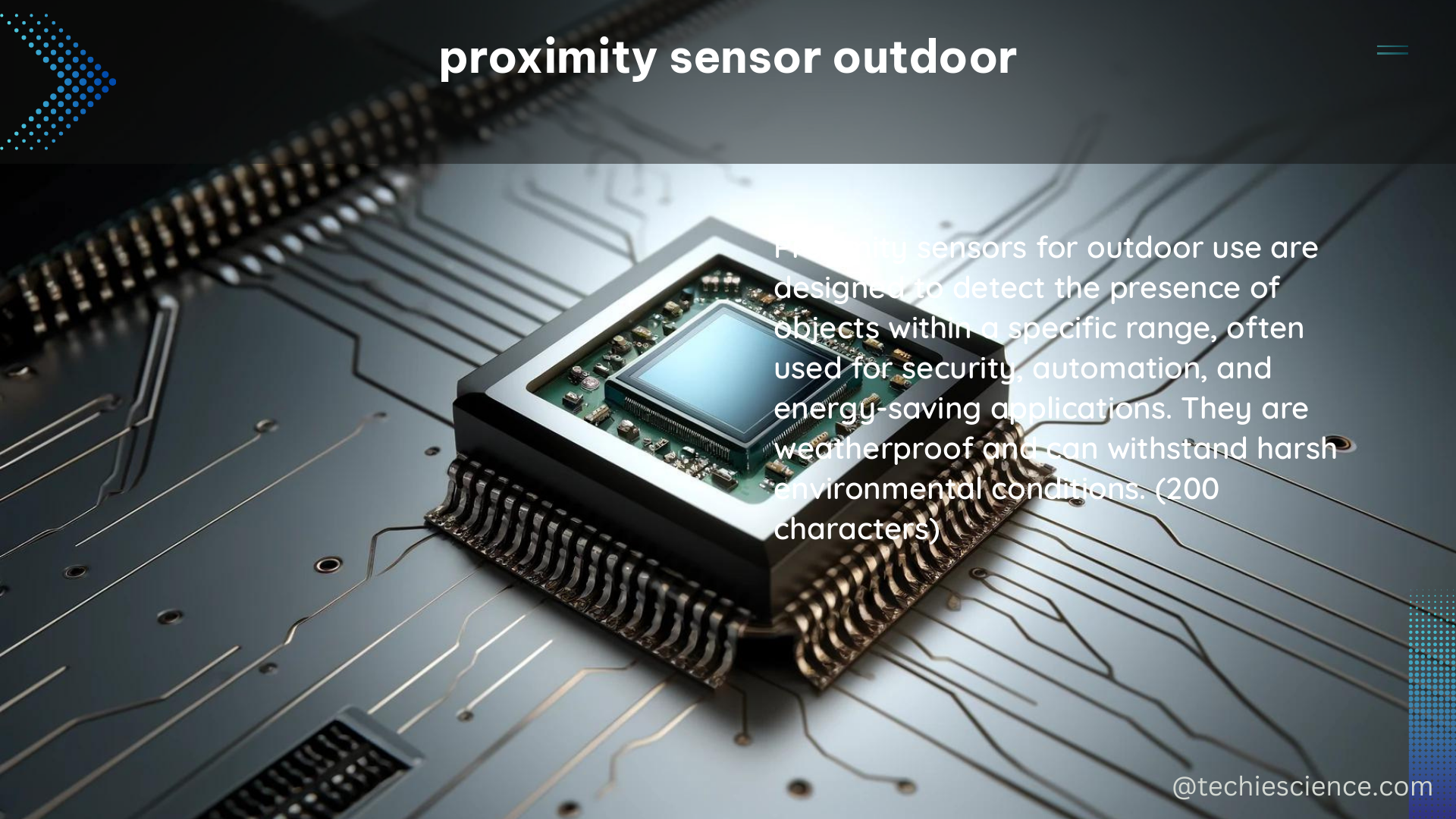Proximity sensors are essential for various outdoor applications, including security systems, automation, and environmental monitoring. These sensors use microwave technology to detect the presence of objects within a defined area, providing a reliable and versatile solution for a wide range of outdoor scenarios. In this comprehensive guide, we will delve into the technical specifications of proximity sensors for outdoor use and provide a step-by-step guide for DIY installation.
Technical Specifications of Proximity Sensors Outdoor
Proximity sensors for outdoor applications are typically microwave-based, offering several advantages over other technologies. Let’s explore the key technical specifications in detail:
Frequency Range
Microwave proximity sensors for outdoor use typically operate in the X-band, which spans the frequency range of 8 GHz to 12 GHz. This frequency range allows for excellent penetration of most materials, making these sensors well-suited for outdoor environments.
Detection Pattern
Microwave proximity sensors are volumetric, meaning they can detect objects within a 3D space. They have a large detection pattern, making them ideal for long, narrow, and flat zones. The detection pattern can be customized by adjusting the antenna configuration and mounting height.
Weather Resistance
Microwave proximity sensors are generally resistant to a wide range of weather conditions, including snow, rain, and fog. However, they may not perform as well in extremely heavy fog or wet, heavy snow, as these conditions can affect the sensor’s ability to accurately detect objects.
Mounting Height
The mounting height of the antennas significantly impacts the detection zone width and height. Most manufacturers recommend a mounting height of 3-6 meters (10-20 feet) for optimal performance, with a linear operating range of approximately 100-150 meters (328-492 feet) when detecting a stomach-crawling intruder.
Types of Microwave Sensors
There are two main configurations of microwave proximity sensors: bistatic and monostatic. Bistatic systems consist of a transmitter and receiver antenna located at either end of a perimeter sector, while monostatic systems use a single transceiver.
| Sensor Type | Transmitter and Receiver Configuration |
|---|---|
| Bistatic | Separate transmitter and receiver antennas |
| Monostatic | Single transceiver antenna |
DIY Installation of Proximity Sensors Outdoor

Installing a proximity sensor outdoors involves several critical steps to ensure optimal performance. Follow these guidelines for a successful DIY installation:
Site Preparation
Ensure that the installation site is on very flat terrain, as microwave sensors require this for optimal performance. Uneven surfaces or slopes can significantly impact the sensor’s detection capabilities.
Mounting Height
Adjust the antenna heights to achieve the maximum signal strength while monitoring the signal at the receiver. As mentioned earlier, most manufacturers recommend a mounting height of 3-6 meters (10-20 feet) for optimal performance.
Alignment
Properly align the antennas to ensure that the maximum detection height and width occur at the midrange of the sensor’s coverage area. Misalignment can result in blind spots or reduced detection capabilities.
Overlap
Ensure that successive sensor links overlap to eliminate dead spots, providing continuous detection of crawling intruders over the entire perimeter sector. Overlapping the detection zones is crucial for maintaining a reliable and comprehensive security system.
Testing
Conduct thorough perimeter IDS (Intrusion Detection System) operability testing in conjunction with perimeter assessment equipment testing. Vary the time of day when testing the sensor to verify its assessment capabilities during different illumination conditions, as this can impact the sensor’s performance.
By following these guidelines, you can successfully install a proximity sensor outdoor and ensure its optimal performance in various outdoor applications.
References
- FEMA Ecosystem Service Value Updates
- Microwave Sensor Technology for Outdoor Perimeter Security
- Microwave Sensor Technology for Outdoor Perimeter Security

The lambdageeks.com Core SME Team is a group of experienced subject matter experts from diverse scientific and technical fields including Physics, Chemistry, Technology,Electronics & Electrical Engineering, Automotive, Mechanical Engineering. Our team collaborates to create high-quality, well-researched articles on a wide range of science and technology topics for the lambdageeks.com website.
All Our Senior SME are having more than 7 Years of experience in the respective fields . They are either Working Industry Professionals or assocaited With different Universities. Refer Our Authors Page to get to know About our Core SMEs.